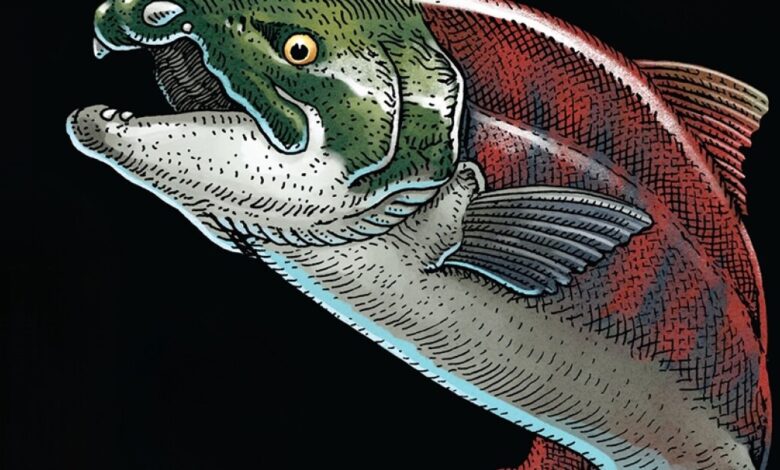Monstrous prehistoric salmon had “tusks like a warthog”

If a giant prehistoric salmon isn’t scary enough for you, how about one with warthog-like tusks? According to a new study, Oncorhynchus rastrosus possessed just such appendages – even though the fish likely fed on tiny plankton.
With an estimated length of up to 8.9 ft (2.7 m) and weight of 440 lb (200 kg), O. rastrosus was the largest salmon to ever exist. It lived 11 to 5 million years in the waters of the North American Pacific Northwest and Japan.
The species was first described in 1972, based on fossils that were discovered in Oregon. At that time, scientists made note of two large sharp teeth that protruded from the end of its snout.
Due largely to the fact that these teeth were found detached from the rest of the fossilized remains, it was assumed that they had pointed back into the mouth like fangs. This characteristic earned the fish its common name, the “sabre-toothed salmon.”
Based on a recent study led by Dr. Kerin Claeson of the Philadelphia College of Osteopathic Medicine, however, it has now been determined that the teeth protruded straight out to either side like tusks. This conclusion was based on CT scans of the original fossils, along with analysis of subsequently-discovered O. rastrosus fossils in which the teeth were still attached to the skull.
It is believed that the salmon primarily used the tusks for defense against predators and/or when defending territory from members of their own species. The scientists also surmise that the fish developed the tusks as they matured, utilizing them to dig riverbed nests when they swam up rivers to spawn. This conclusion was based on the fact that fossils found in marine environments have smaller tusks than those found in freshwater areas.

Whatever else the tusks may have been used for, it was almost certainly not to kill prey. Along with its funny teeth, O. rastrosus possessed bony structures known as gill rakers, which present-day sockeye salmon use to filter their main diet of plankton from water passing through their gills.
Bearing their new findings in mind, the scientists now suggest that Oncorhynchus rastrosus’ common name should be changed to the “spike-toothed salmon.”
“We have known for decades that these extinct salmon from Central Oregon were the largest to ever live,” says Claeson. “Discoveries like ours show they probably weren’t gentle giants.”
A paper on the research was recently published in the journal PLOS ONE.
Source: PLOS via EurekAlert



